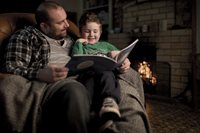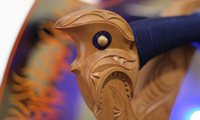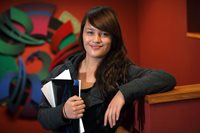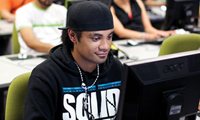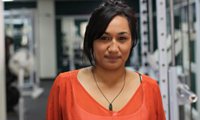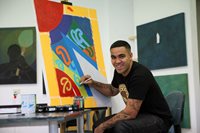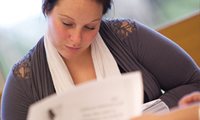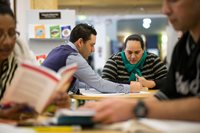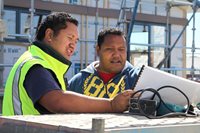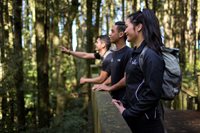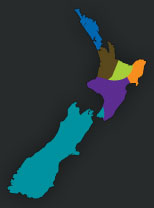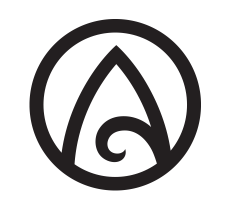James Prier is a product designer digging into history to reimagine traditional tools using modern materials. Ensuring he does so while being mindful of tikanga and Te Aō Māori, he reignited his inner student and completed Te Wānanga o Aotearoa’s Mana Ora business course.
Jamie says the business programme embedded in kaupapa Māori and enriched with tikanga and reo content, changed the way he sees design.
“I’ve always used the approach of trying to put yourself in the shoes of the person you’re designing for. This project has been more about actually engaging with the community you’re designing for, not shying away from it as being a secondary part of design, but instead being a primary driver for the way you design a product,” he says.
The primary driver in this case were kohanga and playcentres as well as Iwi and marae groups throughout the country. Jamie and business partner Dr Johnson Witihera set out to engage with these varied communities and produce something uniquely Aotearoa.
The brainchild of Johnson from observation at his childrens’ kohanga where only spades, trowels and the usual gardening tools were in play, Paku tools are essentially modern versions of traditional Māori gardening implements.
Jamie conducted intense rangahau (research) into traditional tools and how they were used, investigating different materials they could be made from today and engineered version after version to come up with the best. It is during this process that he realised he needed to step back and relaunch into learning through another lens.
“I didnt want to attempt the project without learning first. When you start doing the research you find out how much you don’t know... and you just keep digging and digging. Instead of leaning on my Māori friends so much for information, I decided to learn for myself,” he says.
“I saw the Mana Ora course and it kind of resonated with what I was doing. Something in me said “learn this, right now, these are the values you’ll need to incorporate into your business from day one,” he describes.
Jamie said the business side of the lessons were well presented and seamless, but found the lessons on how to think about tikanga in a business context most valuable.
“It helped me have meaningful conversations with people. I was prompted to go out and interact with our collaborators in the right way. I was able to use the right words, I had the context and some knowledge, and could ask the right questions,” Jamie says.
Jamie understands the need to bring in an Aotearoa existence to think about things differently. He believes this is through holding up a lens to view kaupapa Māori values in everyday life and acting on them.
“When we are challenged to integrate and apply these values into business tasks it makes you look at things like planning, management, resourcing and that sort of stuff a little differently – but the effects on outcomes by applying those values can make a big difference,” he says.
It has been a journey of discovery for this tauira who says the home-based learning model was a perfect fit for his busy schedule. Sometimes the HBL acronym stood more for ‘Holiday-Based Learning’ as he would often take the kete of mahi on family trips instead of a holiday book. Jamie plans to be back at Te Wānanga o Aotearoa soon to continue learning reo and exploring tikanga.

